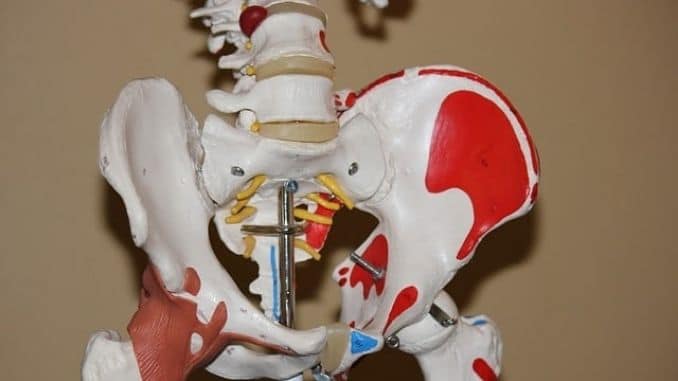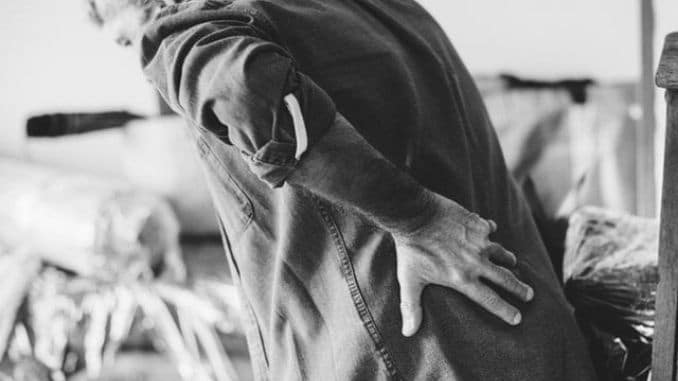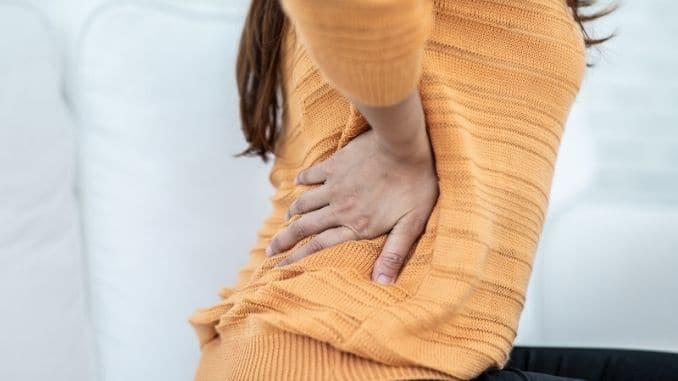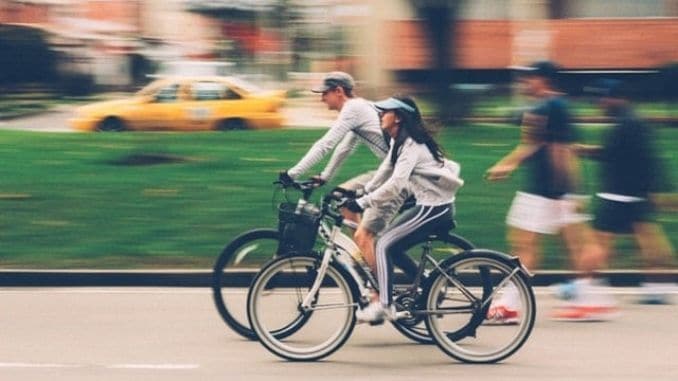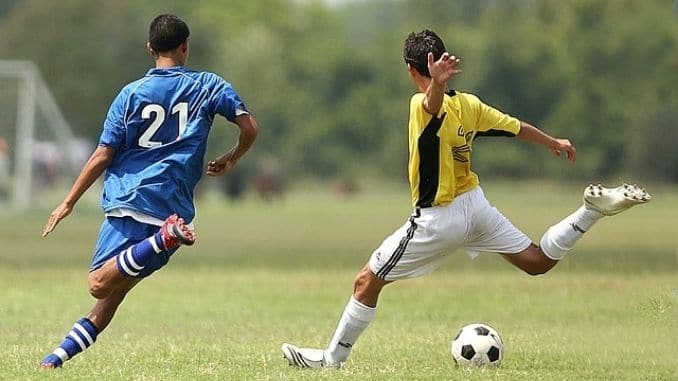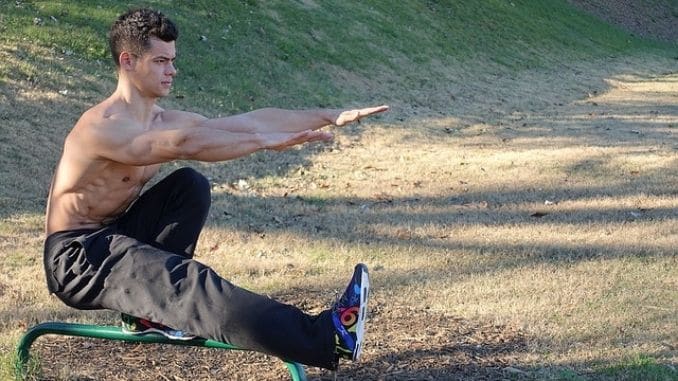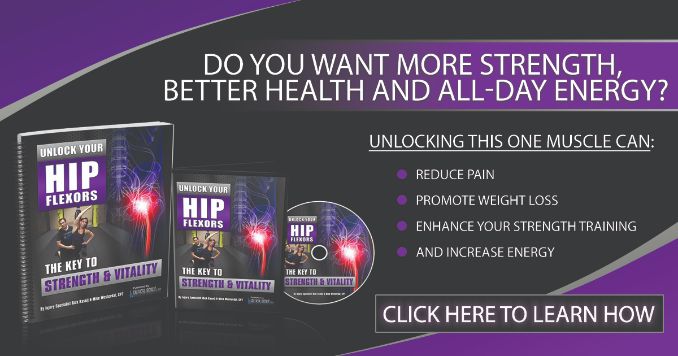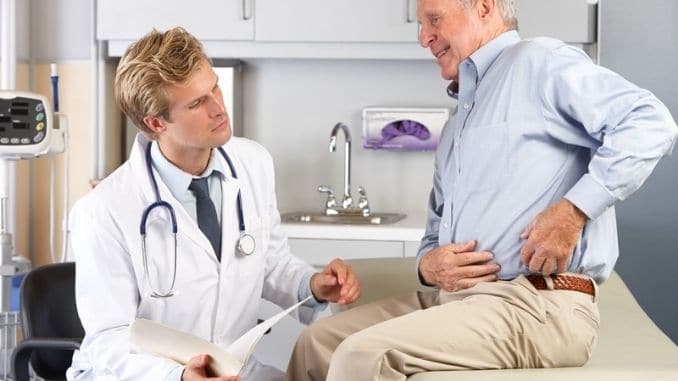
You may not realize it, but your hips serve as your body’s foundation as you move through the world. They not only provide stability for your pelvis and core, but they also influence your posture, balance, and gait and have a direct impact on whether you feel strong or weak as you go about your daily activities.
A problem in the hips can show up as hip pain but can also disguise itself as lower back pain, knee pain, groin pain or even shoulder pain. That’s because if there is something tight, stiff or inflamed in any of the muscles, tendons, and ligaments around the hips — or if something is wrong in the hip joint itself — it can affect numerous other muscles and joints too.
Compounding the issue is our modern-day style of living. Many of us are spending much of our time sitting — whether in the car, at the table, in front of the computer or while engaging with our cellphones and tablets. Multiple hours in the sitting position causes muscle weakness and imbalances in the hips, which can lead to pain and injury.
To stay active and pain-free, it’s critical to learn more about your hips and what you can do to take care of them. Fortunately, there are some simple strengthening and stretching exercises that can help keep hips working at an optimal level while also reducing the risk of injury and easing any pain that may already exist.
What Is a Hip?
Without your hips, you wouldn’t get very far in life. These ball-and-socket joints support the weight of the body, are responsible for moving your upper legs and allow you to walk, climb stairs, run, squat, sit down, stand up and engage in most any other type of movement.
To understand how the hips work and, therefore, what can go wrong with them, it helps to learn a little more about them. First, picture your pelvis, which is the bony structure located in the lower part of the torso, between the belly and legs. A sturdy, bowl-like formation of bones, including the sacrum and tailbones, the pelvis protects the organs in the abdomen while also anchoring the hips in place.
The hips themselves attach to the pelvis through the left and right coxal (hip) bones as well as through a variety of muscles and ligaments. When you picture the bowl-like pelvis, the hip bones are the large bones on either side. In the center of each of these large bones is a cup-like opening or cavity called the “acetabulum.” This is the “socket” part of the ball-and-socket hip joint.
Into this cavity fits the “ball” or “femoral head,” which is the round part of the top of the thighbone, also called the “femur.” So, imagine your thigh bone — that nice strong bone that is your upper leg — and at the top of that bone is a ball-shaped piece of bone that fits into the socket or acetabulum. This is the part of the hip that rotates back and forth.
Between the ball and socket of the hip joint is the articular cartilage, which is the rubbery material that covers the ends of the bones and helps the bones slide against one another easily without causing any damage. It also helps absorb shock.
Around the outside of all these bones, connecting them and holding them together are bands of tissue called “ligaments.” Ligaments are soft tissue structures that connect bone to bone. These connect the ball to the socket, stabilizing the hip and forming the hip joint “capsule,” which is a watertight sac or enclosure around the hip joint. The ligaments wrap around the bones a little like ribbons, keeping everything protected and in place.
Inside the capsule is a thin membrane called the “synovium,” which produces a viscous fluid that lubricates the joint and helps it move comfortably. There are also fluid-filled sacs inside the capsule (called “bursae”) that help provide cushioning between muscles, tendons, and bones.
Around all of that area are large muscle groups and tendons that support the joint and enable movement.
Muscles Associated With the Hip
Muscles associated with hip strength and movement include the following:
- Gluteals: These are the muscles in the buttocks, but they attach to the hips in the back. They help to rotate the hip inward and outward and move the leg closer to and farther away from the body.
- Adductor muscles: These are on the inner thigh and go from the pubic bone in the pelvis toward the femur (thigh bone). They help pull the leg inward toward the opposite leg.
- Iliopsoas muscle: This is a group of two muscles — the psoas and the iliacus. The psoas major runs from the lower back (spine) down to the thigh whereas the iliacus starts in the hip bone. The two join together in the thigh, where they become the iliopsoas and attach to the femur. Here, the iliopsoas acts as the strongest “flexor” of the hip, which means it helps to bring your knee toward your chest. It makes sense that this muscle is also called one of the “hip flexors” as it helps to flex the hip.
- Quadriceps: These are the large muscles at the front of the thighs that run from the hip to the knee. They are the muscles you use when biking and straightening your leg, but they also help you to bend your hip up, such as when you bring your knee into your chest.
- Hamstrings: These are the muscles opposite the quadriceps, existing at the back of the thighs. They run from the hip to just below the knee and cross the hip joint. They help you walk, run, jump and flex and extend the hip.
Around all these muscles are groups of nerves and blood vessels, including the sciatic nerve, which runs from the lower end of the spine down the back of the thigh.
Tendons Associated With the Hip
Tendons are cords of strong tissue that attach muscle to bone. The following tendons are associated with the hip:
- Iliotibial band (IT band): This is a long tendon that runs alongside the femur from the hip to the knee. Several hip muscles connect to this band, which is essential for stabilizing the knee while walking and running. If the IT band is tight, it can cause hip and knee problems.
- Iliopsoas tendon: This tendon attaches the iliopsoas muscle to the femur and passes along in front of the hip joint. It is considered one of the hip flexors.
- Ischial tendon: This tendon connects the hamstring muscle to the “sit bones” or the pointed bones that extend up the backside of the pelvis.
There are other tendons that attach the muscles to the hip and knee and help to move the hip in a variety of ways.
To imagine how all of these parts of the hip work together, visualize the deepest layer as bone, then the ligaments wrap around to form the joint capsule, and the tendons and muscles attach on top. Finally, the nerves and blood vessels weave around and through all of these to help supply everything with needed nutrients and sensation.
How Hip Health Contributes to Overall Health
When the hips are working correctly, you probably don’t think about them at all. However, when they hurt or don’t move as they should, they can become the focus of your attention quickly. Worse, they can cause a variety of other related health problems.
In a 2004 study, researchers found that 19.2 percent of subjects 65 and older surveyed reported hip pain. Those who did also reported worse overall health scores and other health problems, including decreased physical function, physical limitations, and pain. Those without hip problems, on the other hand, had general health scores similar to those age 65 and younger.
If something is wrong with your hips, it affects many things in your life. Suddenly, it becomes more difficult to get up out of a chair, play any sort of sport, walk or run. Hip pain can radiate out to other areas of the body, including the back, knees, legs, and shoulders.
Sometimes, for example, knee pain is caused by the hips, because of the intricate connection of nerves between the two. Unhealthy hips can also create pain in the thigh or leg and may be associated with back pain that radiates down the back or side of the leg. Persistent pain in the hips can affect how a person’s torso moves, so they inadvertently put stress on their shoulders and end up with shoulder pain.
The hips are extremely important to the entire body as they provide the foundation for the spine and organs and provide central stability. They bear the body weight when we’re sitting, standing, walking or running and allow for a large range of motion, second only to the shoulders.
Indeed, quality of life is largely dependent on the health of the hips and their ability to move freely. Unfortunately, in today’s world, we’re all doing something that can damage hip health: sitting too much.
Why Sitting Is So Bad for Your Hips
Recent studies have shown that most of us are sitting more than we should these days. A survey of 5,900 adults, for example, found that nearly 26 percent sat for more than eight hours a day and that 11 percent sat more than eight hours a day and were physically inactive.
All that sitting is bad for our health, scientists tell us because the body needs to be active to stay healthy. When we sit for long periods of time, we increase the risk of a number of diseases, including obesity, metabolic syndrome ― high blood pressure, high blood sugar, abnormal cholesterol levels, and abdominal fat ― cardiovascular disease and cancer. A recent study from the American Cancer Society even found a link between long periods of sitting and the higher risk of death from all causes.
Sitting also puts a strain on the hips and can cause hip pain and mobility problems over time. Too much-sitting impacts the hips in three main ways.
1. Too Much Sitting Weakens the Gluteal Muscles
These are the muscles in the butt and, the more you sit, the looser and weaker they tend to become. They get used to staying in one position, and thus start to respond to movement as unusual. Since these muscles are needed to move the hips, when they get weak, they don’t do their job, so the muscles in the lower back have to pitch in and help.
The lower back isn’t made for this type of activity. Its main job is to provide support and stability to the core, so when the gluteal muscles are weak, and the lower back muscles have to step in, they tend to get sore and tired, which can lead to lower back pain.
2. Too Much Sitting Shortens the Hip Flexors
Remember that these are the muscles and tendons in front of the body that work to help the hip bend and flex. The more you sit, the tighter these hip flexors become. In other words, they get used to sitting, so there’s no reason for them to stretch out. That means they’re not going to work as well when you go to stand up and move, which again, means the lower back has to take on some of the work. That equals more back pain.
Tight hip flexors can also pull the pelvis forward so that the belly hangs more forward, too, changing your posture to one that looks sort of “swaybacked.” The excess curve in the lower back can lead to more back pain and hip pain.
3. Too Much Sitting Decreases Hamstring Flexibility
Those hamstrings in the back of your legs are in their shortest position when you’re sitting. The more you sit, the more they grow accustomed to staying in that position. Then, when you stand up, you suddenly ask them to lengthen, and they’re not ready for that. This is why the hamstrings often feel tight when you’re sitting a lot. Eventually, they become less flexible and are less able to help you move your hips.
What Can Go Wrong With the Hips?
In addition to excess sitting, there are many other things that can cause hip pain and hip problems. Some of the most common are listed below.
Arthritis
Osteoarthritis and rheumatoid arthritis are two of the most common causes of hip pain as they affect the joint directly. Both diseases cause inflammation in the joint and break down the cartilage that helps cushion the area between the bones. Both cause gradual degeneration of the joint, leading to stiffness, pain, and immobility.
Avascular Necrosis
Avascular necrosis (osteonecrosis) occurs usually after a hip fracture or dislocation and means that the bone tissue in the hip is starting to die. It’s caused by slowed or blocked blood flow to the hip bone. High-dose steroids can also cause it.
Hip Bursitis
As noted above, bursae are little sacs of liquid that help provide a cushion between muscles and tendons and bones. When these sacs become inflamed, usually because of too much sitting or other repetitive activities that strain the hip joint, they can cause pain.
The bursae most commonly associated with hip pain include the one that covers the bony point in the hip bone and the one that is located on the inside of the hip in the groin area.
Bursitis may be caused by an injury to the hip, such as a fall or by repetitive activities like running, stair climbing, bicycling or standing for long periods. If one leg is shorter than the other, that can also increase risk as can rheumatoid arthritis.
Hip Fractures
If a hip bone breaks, it can make someone unable to move at all. Hip fractures are more common in older people with osteoporosis (weak and thinning bones) and tend to occur because of falls.
Hip Labral Tear
This occurs when the cartilage along the outside rim of the hip socket is ripped or torn, usually because of a traumatic or repetitive twisting motion. This ring of cartilage acts as a rubber seal or gasket to hold the ball inside the hip socket. When it tears, it can cause pain, stiffness and limited motion as well as a locking, clicking or catching sensation in the hip joint. Athletes who play ice hockey, soccer, golf, football and dance ballet are most at risk.
IT Band Syndrome
This occurs when the IT band becomes inflamed, often because of too much running. It’s a repetitive strain injury that can also affect cyclists and hikers and causes pain mainly on the side of the knee.
Muscle Strain
Incorrect form while exercising or other types of wear and tear can cause the muscles to become inflamed and swollen, which can cause pain and stiffness.
Piriformis Syndrome
The piriformis is a deep stabilizer muscle in the pelvis that originates at the base of the spine and goes to the top of the femur. Inflammation in this muscle can cause pain in the hips and buttocks. Distance runners and soccer players are more at risk for this condition.
Sciatica
Sciatica occurs when inflammation in the lower back compresses the sciatic nerve and causes pain that radiates down the back of the leg. The pain may also radiate outward into the hip area. Causes of the inflammation may include lower back pain, a bulging disk in the spine or pregnancy. Inflammation around the hips and gluteal muscles can also cause sciatica.
Tendinitis
Tendons around the hip joint can also become inflamed or irritated because of overuse or repetitive use. This can cause stiffness and pain. The iliopsoas tendon is a common one that may suffer from this inflammation, usually caused by abnormal stress or overwork. Those who rapidly increase the intensity of their workouts are at risk for this type of hip pain.
Symptoms of Hip Problems
How can you tell if you may be suffering from hip problems? Below are the most common symptoms:
- Hip stiffness, particularly in the morning or after periods of rest
- Hip pain and tenderness
- Pain when sitting, when getting up from a sitting position or when walking up stairs
- Difficulty walking or having to limp when walking
- Pain in the groin area
- Difficulty sleeping on the hip
- Swelling over the hip area
- Warmth or redness around the hip
- Pain when moving the leg out or back from the body
Why It’s Important to Take Care of Your Hip Flexors
Although it’s important to take care of all muscles, tendons, and ligaments associated with the hips, as well as the hip joint itself, most people would benefit by focusing especially on the hip flexors.
This is because the hip flexors are involved in such a wide range of movements that we regularly perform, including walking, running, jumping and even just standing. They’re key to staying active and feeling comfortable and are especially important for athletes. In a 2009 study, researchers found that runners who suffered from injuries had weaker hip flexor muscles than those who didn’t suffer injuries.
The other problem is the way we live today. Most of us spend considerable time sitting in a car or public transportation vehicle, in front of the computer, around the table or meeting office or in front of the television. We are also regularly staring down at our tablets and cellphones. All of these activities shorten and tighten the hip flexor muscles while worsening posture, compelling us to round the shoulders and jut the head forward. That posture, in turn, affects the hip flexor muscles further.
If we don’t regularly strengthen and stretch these muscles, the damage from all that sitting gradually accumulates, causing muscle imbalances in the hips, buttocks, back, legs and more.
Hip flexor strain can also occur when we use these muscles too much without keeping them strong. Athletes who regularly jump, run or perform knee kicks — such as cyclists, soccer players, martial artists, hockey players, dancers, step aerobics participants, and others — may be even more at risk for hip flexor problems. Muscles that are weak, tight or stiff are more likely to suffer from trauma and strain.
Without the help of strong, flexible hip flexors, the hips can end up in the wrong position during movement, which can lead to hip and knee injuries. Strengthening the hip flexors helps promote proper form and foot placement and reduces the risk of problems.
The good news is that hip exercises can not only help you to go about your daily life without pain, but they can also help increase athletic performance. In a 2005 study, researchers found that runners participating in an eight-week hip flexor resistance-training program decreased their 40-yard and shuttle run-times by 3.8 percent and 9 percent, respectively. They also increased hip flexion strength by 12.2 percent.
Hip flexor exercises can also help increase the range of motion, which is important for avoiding injuries. Researchers found in one study that runners who had sustained an injury had significantly more restricted the range of motion in the hip joints than those who had not been injured.
Exercises That Help Keep Hips Working Well
There are a wide variety of exercises that can help keep the hips working optimally. Some are strengthening exercises, and some are stretching exercises to maintain flexibility. Both are important for the health of these muscles and the hip joint in general.
There are effective exercises you can do with exercise balls, bands, weights and fitness center equipment. All of the following exercises, however, can be performed anywhere at any time without equipment — or with equipment found easily in a home or office.
Hip Strengthening Exercises
- Psoas hold: This stretch is made specifically for the psoas muscle — the primary hip flexor. Start by standing up straight, then bend the right knee up to a 90-degree angle, pulling the thigh toward the ceiling and balancing on the other foot. Once the knee is up as high as it will go, hold for 10 to 30 seconds, then lower and repeat on the other side.
- Straight leg raises: Lying on the floor on your back, bend one knee gradually and pull the leg up, keeping the foot on the floor until your heel nearly reaches your buttocks. Now, raise the other leg toward the ceiling while keeping it straight. Hold for a few seconds at the highest position, then repeat the raise five to 10 times before switching legs. Be sure to keep the small of the back on the floor.
- The dead bug: Start by lying on the floor on your back. Raise both legs, keeping them straight until they reach a 90-degree angle, with your toes, pointed toward the ceiling. While holding the left leg there, slowly lower the right leg until it’s a few inches off the floor while at the same time raising your left arm over your head. Hold for a couple of seconds, then bring the arm and leg back to the starting position and do the same thing on the other side. Repeat 10 to 15 times.
- The reverse lunge with knee drive: Stand straight, feet hip-width apart. Lower into a lunge position by sliding your right leg back. Then, push yourself back to standing, but instead of returning the foot to the floor, bring the knee up into the chest. The movement should be smooth, not fast and forceful. As you come up, bring the knee up into the chest, then lower the foot to the starting position. Repeat on the other side and go for 10 to 15 reps.
- Foot-sliding climber: Get a couple of kitchen towels and stand on a smooth surface like a wood, tile or linoleum floor. Get into a push-up or plank position and put one towel under each foot, right at the ball of the foot. While keeping the towel pressed to the floor, bring your right leg toward your chest, and then back down. Repeat on the other side. As you get the hang of it, you can go faster, pulling one leg up and then the other, sliding them over the floor easily as if you were climbing. Hold yourself up on your arms the whole time.
- Skater squats: First, perform a regular squat. Bending from the hips and knees, lower your butt toward the ground while keeping the back straight and chest up. Once in the squat position, shift your weight to the left leg, and lift the right leg straight out to the side with your toes pointed forward. Alternate legs and repeat five to 10 times and then stand straight again.
- Clamming: Lay on your side with your legs stacked on top of each other, knees slightly bent, holding your head up in your hand. Lift and open the top knee only so that it points to the ceiling while keeping the bottom knee pressed to the floor. Make sure you don’t roll the body forward or back — keep straight up on your side. You should feel that muscle in the outer hip working. Hold for 20 to 30 seconds, and then lower the knee to its original position. Repeat 10 to 30 times, and then swap to the other side.
Hip Stretching Exercises
- Butterfly stretch: While sitting on the floor, place the soles of the feet together. Allow the knees to relax outward. Then pull the feet in toward you while pressing the knees down toward the floor. Feel the stretch on the inner legs and in the hips. Hold for 10 to 30 seconds, and then relax and repeat.
- Bridge pose: Lie on the floor on your back with the knees bent. Slowly raise the hips off the floor while pressing the heels into the floor and squeezing the glutes. Hold for 10 to 20 seconds, and then lower and repeat.
- Pigeon pose: This is a popular yoga pose that helps stretch and open the hips. Start in a plank or push-up position, your toes and hands holding you up, back straight. Slowly bring one leg forward, bending the knee until it’s up to your chest, then place the knee on the floor by your hand, allowing the ankle to rest on the inside. Then, lower down gradually, sliding the other leg back as you allow that leg to come down on the floor. You should feel the stretch in your hip. Hold 20 to 30 seconds, and then come back up and switch legs.
- Standard lunge: Stand straight with feet together, then take a large step forward with one foot, and bend at the knee and transfer the weight onto the bent leg. Lower the hips down gradually until you’re in a lunge position. You should feel the stretch in your hips. Hold for 20 to 30 seconds, and then repeat on the other side.
- Standing stretch: Stand up straight with feet hip-width apart. Bending your knee, bring your right foot up behind you toward your butt. Grab the foot with your right hand and gently pull to bring your foot closer to your backside and your knee more pointed to the floor. Hold for 30 seconds, then lower down and repeat on the other side.
- Active chair stretch: Stand in front of a chair and place the right foot on the seat. Hold your arms out in front of you at chest level. Then, raise your arms as you push your pelvis forward gently into a lunge-like position. Your left leg should straighten behind you while deepening the bend in your right knee. You should feel the stretch in the front of the left hip — right in the hip flexors.
- Figure 4 stretch: Lie on your back on the floor. Cross your left foot over your right thigh, and then bend the right knee, bringing that foot toward you. Grasp the back of the bent right leg and pull it toward your chest even further. You should feel the stretch in your hips, lower back, hamstrings, and glutes. Hold for 10 to 30 seconds, lower and repeat on the other side.
For your guide to eliminating hip pain and stiffness, check out Unlock Your Hip Flexors, here!

